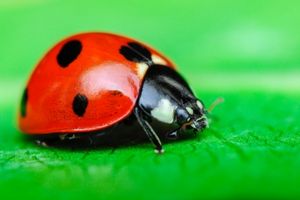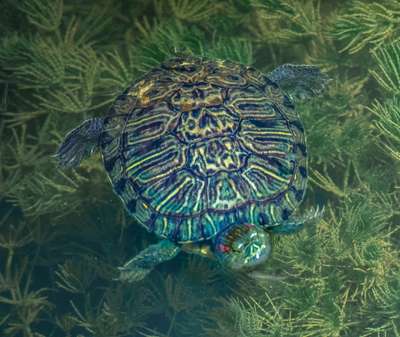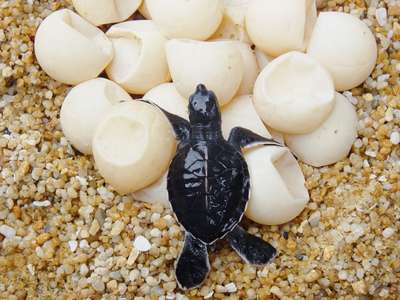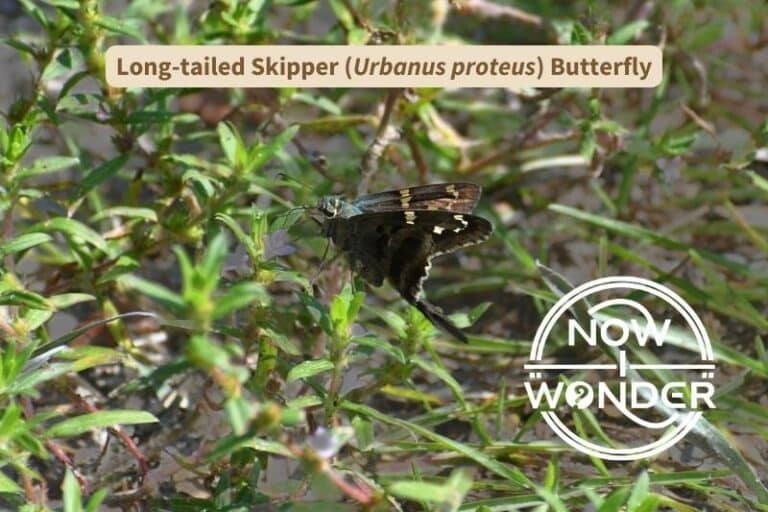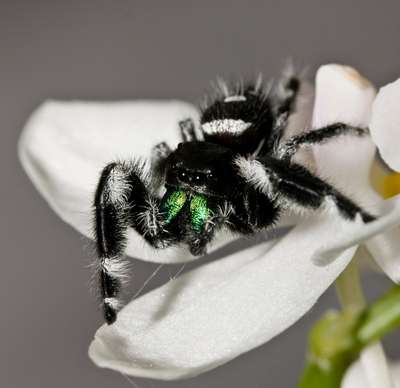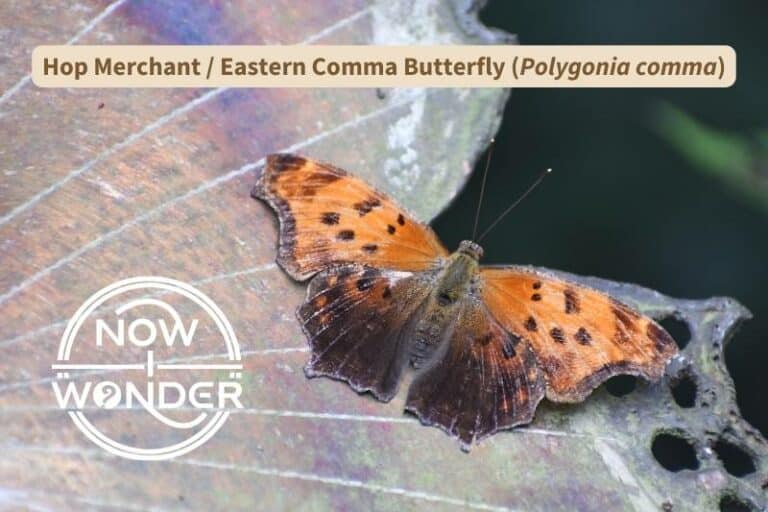American Painted Lady butterflies are large, common, and skittish orange and black butterflies found throughout North Carolina. Often overlooked or mistaken for Monarch Butterflies thanks to their habit of flying away when approached, they are the most cold tolerant of their closely related cousins.
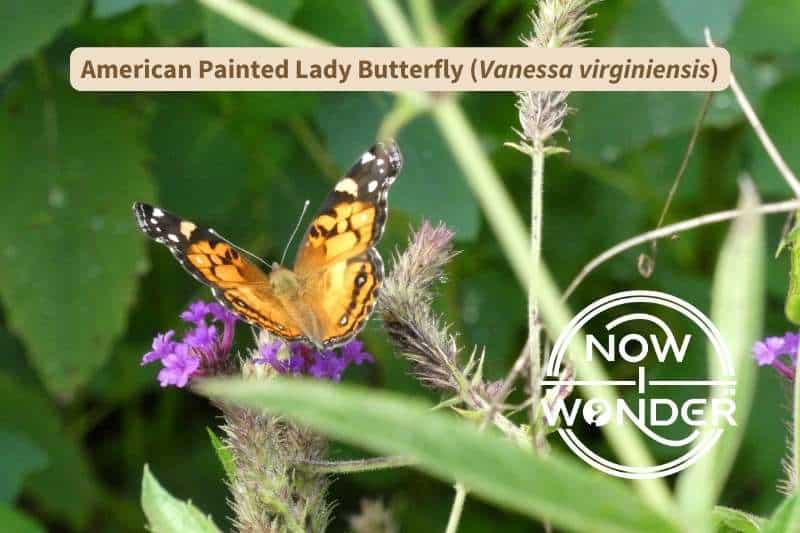
American Painted Lady butterflies are a great example of how looking closer at the world around us can offer surprising rewards.
I spotted this butterfly from approximately 30 feet away as I was hiking along a utility cut, looking for creatures as always. Its bright orange and deep black coloration stood out against the sunlit green of the weedy vegetation, and at first glance, I thought it was a Monarch butterfly (Danaus plexipus). After all, Monarchs are the most famous orange and black butterflies around.
But as I moved closer to investigate, I quickly realized that this butterfly was something completely different. The orange was slightly paler, the black not as extensive as in Monarchs, and both the body color and wing patterning was all wrong.
I was actually looking at an American Painted Lady butterfly – an often overlooked yet truly beautiful species.
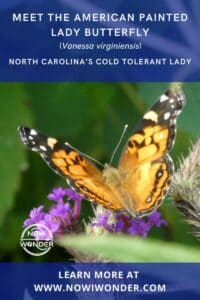
Fun Facts About American Painted Lady Butterflies to Wow Your Friends
- Other common names for the American Painted Lady butterfly are “Hunter’s Butterfly”, and “Virginia Lady” (Pyle 1981).
- American Painted Lady caterpillars create shelters for themselves by spinning silk around leaves. The caterpillars hide from predators in these inconspicuous shelters when they aren’t actively feeding.
- American Painted Lady butterflies are common to abundant in North Carolina, but sometimes go unnoticed and unappreciated because they are relatively small and wary. They fly off quickly when approached but if you spook one of these butterflies, keep still and be patient – they often come back to the same general area within a few minutes (Daniels 2003).
- As a species, American Painted Ladies seem to be the most cold-tolerant of their close relatives, the Painted Lady and the Red Admiral, and the most likely to overwinter successfully in the northern states (Pyle 1981).
- Another “lady” species of butterfly called the “Painted Lady” (Vanessa cardui) looks similar to the American Painted Lady (Vanessa virginiensis).
- A helpful mnemonic to distinguish the two is “American ladies have big eyes and an open mind”.
- American Lady (V. virginiensis) butterflies have two large eyespots on the underside of their hind wings, which Painted Lady (V. cardui) butterflies lack, thus the “big eyes” portion of this saying.
- The black markings on the top surface of American Lady (V. virginiensis) butterfly forewings don’t connect, while those on Painted Lady (V. cardui) butterflies do, thus the “open mind” portion of this saying (Glassberg, 1999).
- A helpful mnemonic to distinguish the two is “American ladies have big eyes and an open mind”.
How Are American Painted Lady Butterflies Classified?
| Kingdom | Animalia |
| Phylum | Arthropoda |
| Class | Insecta |
| Order | Lepidoptera |
| Family | Nymphalidae (“brushfoots”) (subfamily Nymphalinae “true brushfoots”) |
| Genus species | Vanessa virginiensis |
American Painted Lady butterflies (also called simply “American Lady”) belong to the “brush-foot butterfly” family Nymphalidae, which contains more species worldwide than any other butterfly family. There are approximately 3000 brush-footed butterfly species worldwide, around 160 of which can be found living in, or visiting, North America (Pyle 1981).
Butterflies classified in this family have reduced front legs, which makes them appear to have only four legs at first glance. The front legs look like little brushes (thus the family name) and aren’t used for walking.
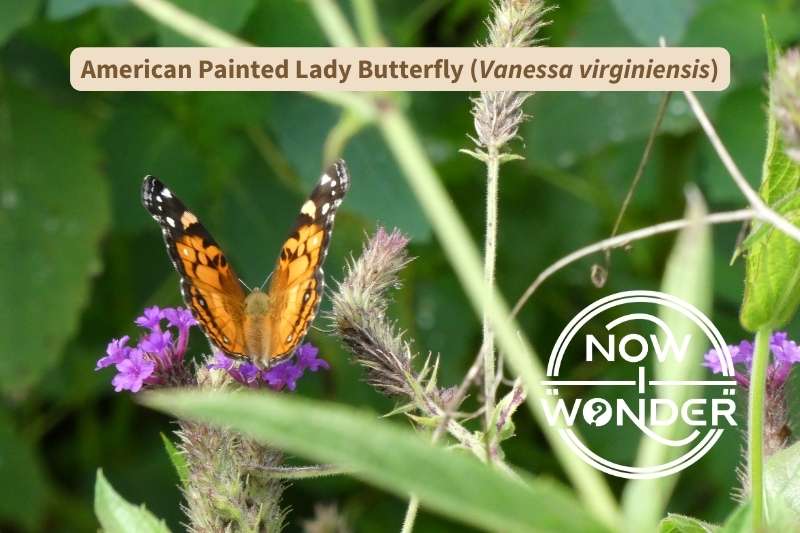
How Do I Know I’m Looking at an American Painted Lady Butterfly?
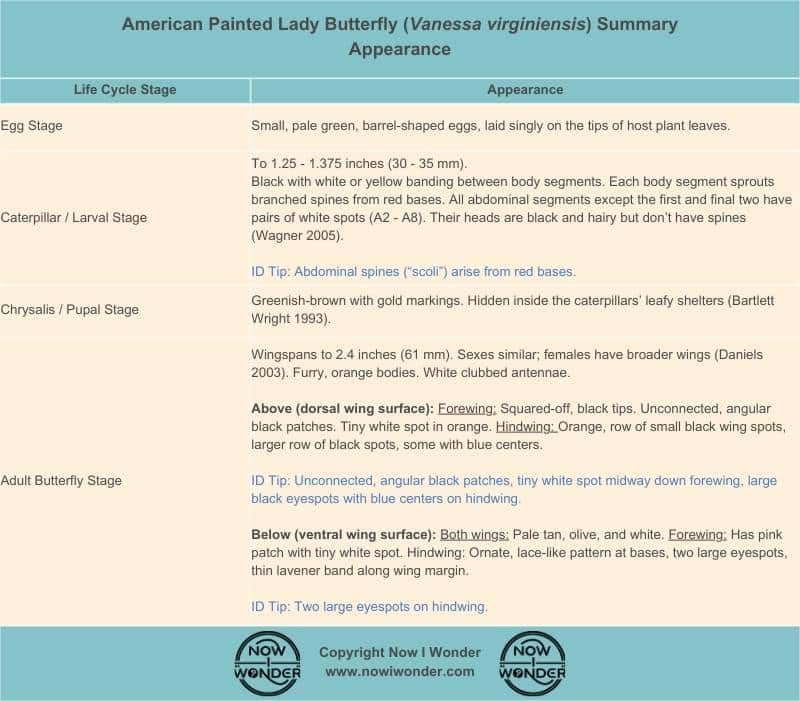
Appearance of American Painted Lady Butterfly Eggs
Female American Painted Lady butterflies lay small, pale green, barrel-shaped eggs. They lay their eggs one at a time on the tips of host plant leaves (Daniels 2003).
Appearance of American Painted Lady Butterflies Caterpillars / Larvae
American Painted Lady caterpillars grow to approximately 1.25 inches (30 mm) long (Bartlett Wright 1993). Their appearance can vary slightly but the caterpillars are usually black with white or yellow banding between body segments. Each body segment sprouts branched spines from red bases. All abdominal segments except the first and final two have pairs of white spots. Their heads are black and hairy but don’t have spines (Wagner 2005).
American Painted Lady chrysalids are greenish-brown with gold markings and often hidden inside the caterpillars’ leafy shelters (Bartlett Wright 1993).
Appearance of Adult American Painted Lady Butterflies
Adult American Painted Lady butterflies are on the small side for brushfoot butterflies, with adults growing to approximately 2.4 inches (61 mm). Both sexes show similar coloration but females have broader wings (Daniels 2003).
Their bodies are orange and furry, and the clubs on the tips of their antennae are white. Like all butterflies classified within the brushfoot butterfly family Nymphalidae, their forelegs are significantly shorter than the middle or hind legs. This makes them look like they have only four legs, instead of the expected six.
The top surface of their wings are mostly orange, which can sometimes appear pinkish when the angle of the sun is just right.
The tips of their forewings are extended and squared off. The forewing tips are black and dotted with bright white blotches of different sizes. The orange area of the forewing is decorated with a tiny white dot about halfway down the wing, and with several, unconnected, angular black patches closer to the body.
The margins of the hind wings are also orange and banded in small black spots. Each hindwing has an additional row of larger black eyespots. Some of the spots in this row are larger than others and have blue centers.
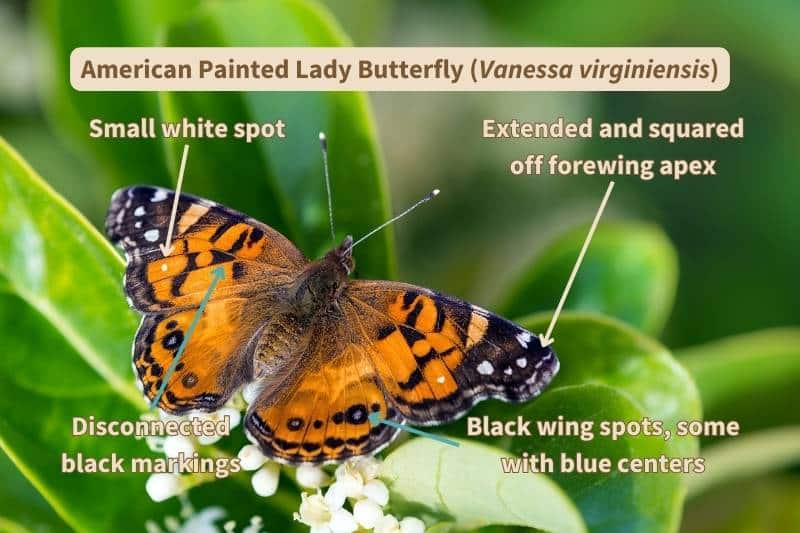
The bottom wing surfaces are intricately patterned with a cobweb or lace-like pattern. The overall color is much paler than the top wing surfaces. The underside of American Painted Lady butterfly wings are mostly olive, black, and white. Their forewings have a large pink patch with the same tiny white dot as the dorsal surface. Their hindwings sport two large black and olive-colored eyespots and a thin, pale purple band near the edges.
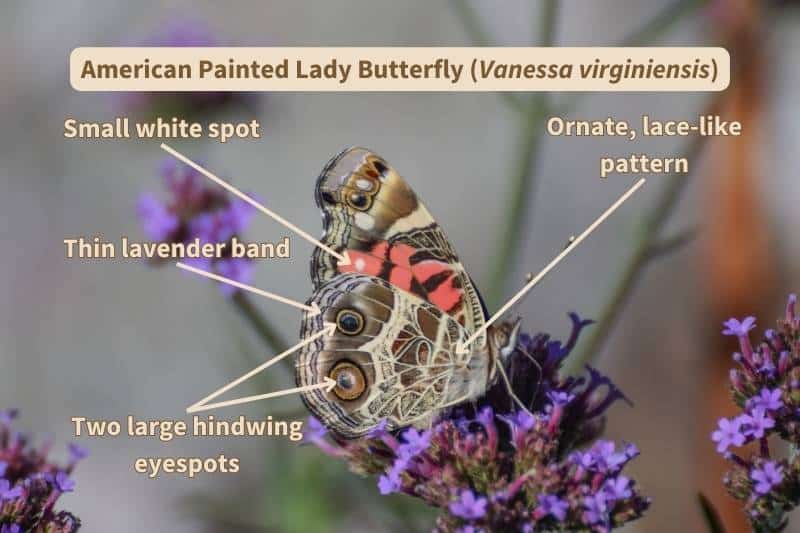
When Can I Find American Painted Lady Butterflies in North Carolina?
American Painted Ladies can be found all across North Carolina from late March to late October. They hatch and develop into multiple generations per season (Daniels 2003).
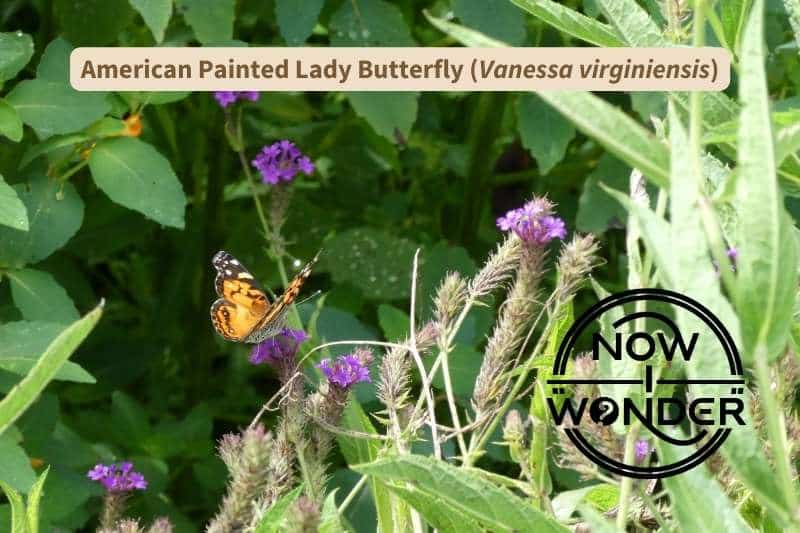
Where Should I Look To Find American Painted Lady Butterflies in North Carolina?
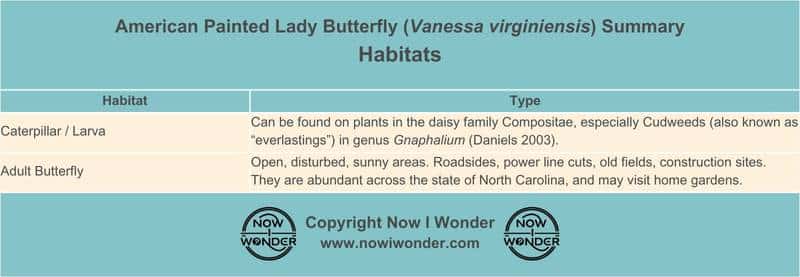
These butterflies live in open, sunny areas that have been disturbed. Look for them along roadsides and power line cuts, in old fields, and around construction sites. They are abundant across the state of North Carolina, and may visit home gardens.
What Do American Painted Lady Butterflies Eat?
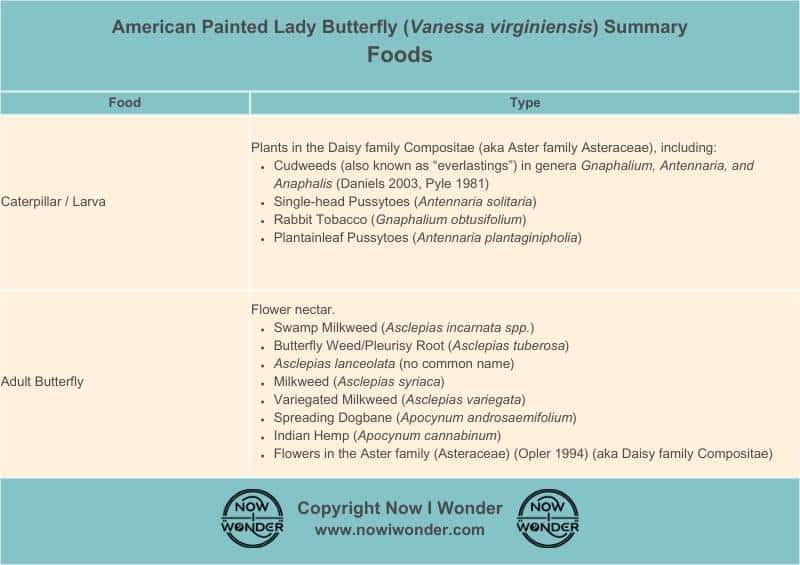
American Painted Lady Butterfly Larval Food Plants
American Painted Lady caterpillars feed on plants in the daisy family Compositae, especially cudweeds (also known as “everlastings”) in genus Gnaphalium (Daniels 2003).
Adult American Painted Lady Butterfly Food
Adult American Painted Lady butterflies eat flower nectar. They will visit milkweeds (Asclepiadaceae), dogsbane (Apocynum cannabinum), and are especially fond of nectar from flowers in the Aster family (Asteraceae) (Opler 1994).

References
Bartlett Wright, Amy. 1993. Peterson First Guides: Caterpillars. Boston, MA: Houghton Mifflin Company.
Daniels, Jaret C. 2003. Butterflies of the Carolinas. Cambridge, MN: Adventure Publications, Inc.
Glassberg, Jeffrey. 1999. Butterflies Through Binoculars: The East: A Field Guide to the Butterflies of Eastern North America. New York, NY. Oxford University Press.
Opler, Paul A. 1994. Peterson First Guide to Butterflies and Moths. Boston, MA: Houghton Mifflin Company.
Pyle, Robert Michael. 1981. National Audubon Society Field Guide to Butterflies: North America. New York, NY. Alfred A. Knopf.
Wagner, David L., 2005. Princeton Field Guides: Caterpillars of Eastern North America. Princeton, NJ: Princeton University Press.

